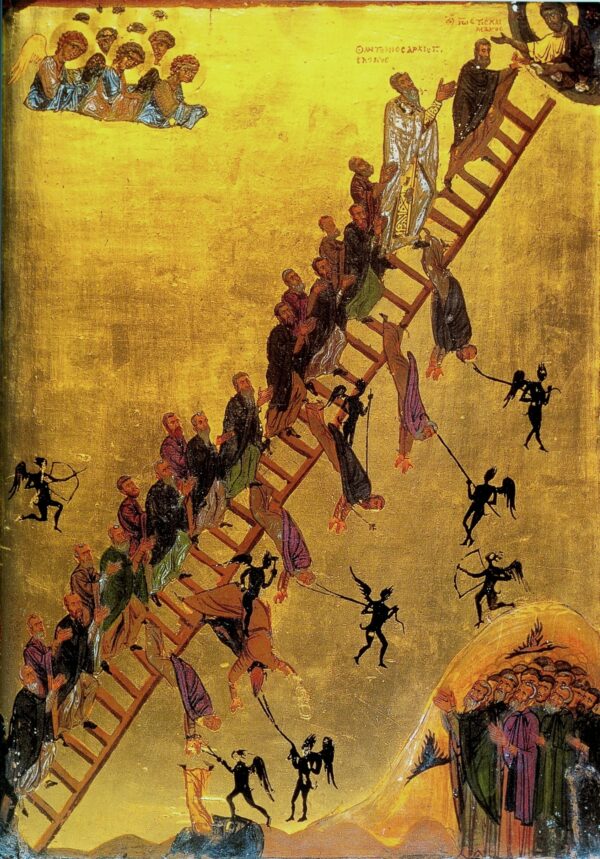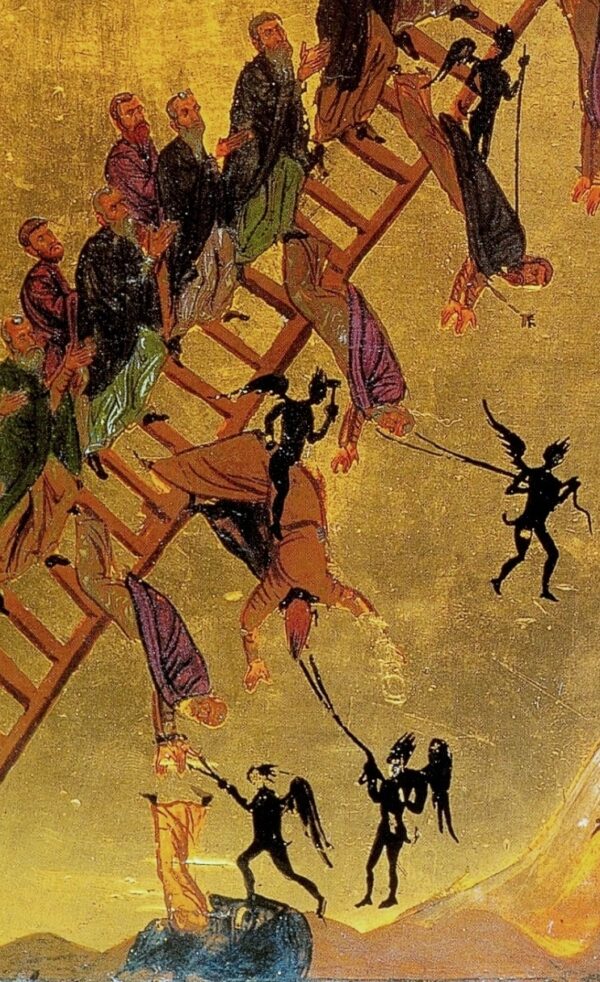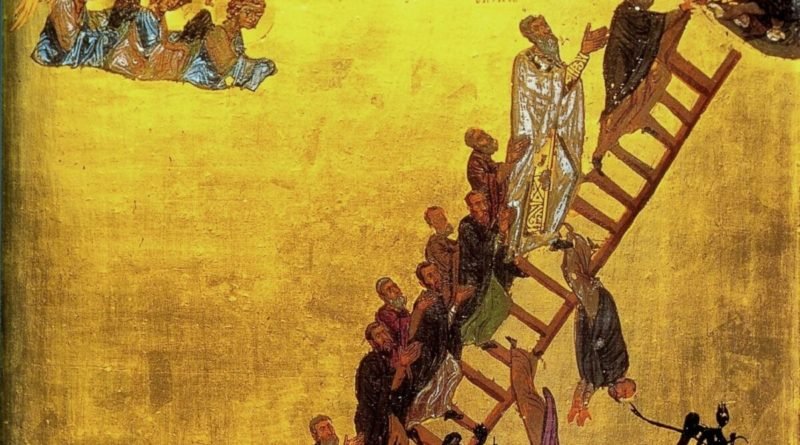‘The Ladder of Divine Ascent’
For centuries, Byzantine art acted like a compass, orientating the devout in their faith and, ultimately, guiding them to their salvation. The Byzantine artist painted in a specific style, a visual language if you like, that Orthodox Christians understood. “His role was akin to that of the priesthood and the exercise of his talent a kind of liturgy—liturgy in a sense almost sacramental—rather than a didactic function,” as stated in “The Oxford Companion to Art.”
Every part of Byzantine art brings the devout closer to God. “The arrangement of mosaics or paintings in a church, the choice of subjects, even the attitudes and expressions of the characters, were all determined according to a traditional scheme charged with theological meaning.”
Art to Ascend By
In Saint Catherine’s Monastery, at the base of Mount Sinai in Egypt, visitors can view a remarkable 12th-century icon that epitomizes Byzantine art: “The Ladder of Divine Ascent.” Byzantine artists made the work to remind Orthodox monks of the constant vigilance needed to triumph over evil, and the righteousness required to reach heaven.
The artwork is based on St. John Climacus’s Orthodox Christian text “The Ladder of Divine Ascent,” which he wrote around A.D. 600, as a guide for ascetics. The text describes the 30 stages of spiritual perfection as rungs on a ladder to salvation (theosis). St. John states in the ninth step that “The holy virtues are like Jacob’s Ladder [in the Old Testament]. For the virtues, leading from one to another, bear him who chooses them to Heaven.”
Orthodox Christians often read the text during the season of Great Lent, before Orthodox Easter which, this year, falls on April 16.

In the icon, a stream of monks, with their hands in prayer, climb the ladder to meet Christ in heaven. A group of monks on the ground watch on as some of their fellow monks succumb to the perils that can befall them as they embark on their arduous ascent. Angels in the heavens embody the virtues and encourage the monks, while a series of shadowy demons with animalistic tails try all manner of tricks to pull the monks off track. Some shoot arrows, while other demons lasso their targets. These demons also symbolize that sins such as lust, wrath, and gluttony can even pull the devout from their sacred missions.

As they climb each rung, the monks must cultivate a specific virtue to overcome each vice. Evil remains close by even as the monks’ trials become harder near heaven. One poor soul nears Christ but still sins, taking a demonic fall. The fallen enter the jaws of hell, frequently shown as a dragon in these types of icons, but in this work, hell is a monstrous head swallowing one of the fallen monks.
Glory awaits the victorious monks, as Christ in heaven greets them with a blessing at the top of the ladder. They’ve conquered the earthly temptations, and at the last step embody the supreme virtues of faith (pistis), hope (elpis), and the highest form of love, charity (agape).




